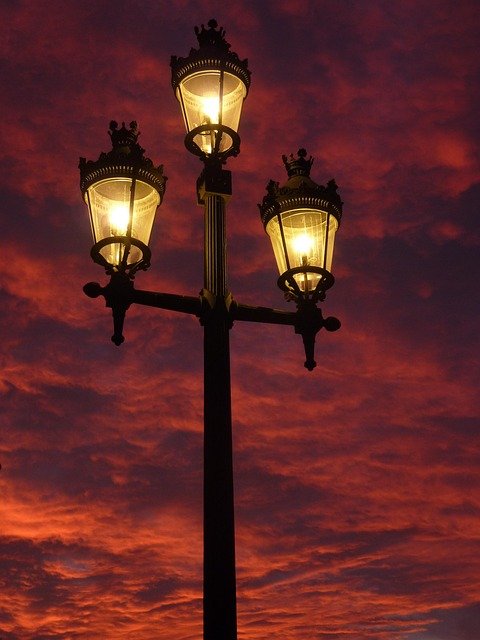Introduction: As Smart Street Lighting Evolves, Traditional Photocells Remain a Critical Foundation
No matter how intelligent and sophisticated the urban street light infrastructure and software get, the base on which it is built still remains the traditional, scalable, and reliable photocells sensor.
As smart cities are getting smarter around the globe, intelligent street lighting is becoming a sought-after component of their lighting. This is because it promises energy savings, remote management, and data integration. It offers high energy efficiency, compliance with communication protocols, and precision sensing, resulting in real-time data that reduces light pollution and provides light when and where needed. This leads to restricting the overusage of power.
According to [Wikipedia’s entry on Intelligent Street Lighting] (https://en.wikipedia.org/wiki/Intelligent_street_lighting), modern systems are evolving and getting smarter than basic timers and photocells towards adaptive, connected, and cloud-managed platforms. These platforms are built around the following features:
- Real-time environmental sensing
- Wireless communication (ZigBee, LoRa, NB-IoT)
- Dynamic dimming and traffic-based control
- Centralized monitoring and OTA updates
At first glance, this may seem like the end of traditional photo controls. But in reality, photocells are becoming the physical gateway to smart lighting, serving as standardized, modular control points in hybrid and upgradeable lighting networks. Through their reliability, scalability, and cost effectiveness, they offer the strong base upon which modern intelligent urban lighting can stand firm.
Let’s see what modern intelligent lighting has brought to the table and where the traditional photocells stand amidst the changing scenario.
Key Features of Intelligent Street Lighting (per Wikipedia)
The modern, intelligent street lighting infrastructure boasts highly efficient sensing capabilities to precisely detect the ground conditions. Their remote monitoring and IoT communication have turned them into smart nodes while also making it possible to reduce maintenance costs due to prompt predictive maintenance.
| Feature | Description |
| Ambient light sensing | Automatic on/off or dimming based on surrounding light levels |
| Motion-based control | Adapts to traffic and pedestrian flow |
| Remote monitoring | Enables real-time diagnostics, failure alerts, and usage data |
| IoT communication | Supports ZigBee, LoRa, NB-IoT, WiFi, PLC |
| Predictive maintenance | Tracks failures and component health |
| Energy efficiency | Achieves up to 70% savings compared to legacy systems |

How Lead-Top’s Photocontrol Technology Aligns with Smart Lighting Trends
As a global specialist in photocontrols and mounting accessories, Lead-Top has engineered its product line to support both traditional and future smart applications. Hence, we promise scalability and durability along with adaptivity. Here’s how we address key trends from the Wikipedia article:
Full Communication Compatibility
Our product line is made to completely support and be compatible with all the advanced communication protocols.
Our advanced controllers (e.g. LT-243S, LT600 series) support:
- ZigBee, LoRa, NB-IoT, and Cat.1(eg, LT-243S)
- Zhaga Book 18 standard 4-pin interface (eg, LT600)
- Remote dimming, OTA updates, cloud integration (eg, developed new type controller feature LT600X series)

Superior Sensing Precision & Energy Efficiency
When it comes to power efficiency, LeadTop Electrical is leading the market with its IR phototransistor units and adjustable lux threshold features. Here is how we ensure the highest possible energy efficiency through precision sensing:
- IR Filter Phototransistors reduce false triggers
- Customizable lux thresholds (e.g. 10–16 Lux ON, 15-24Lux OFF)
- Ultra-low power consumption (≤ 0.5W @120VAC)
Outdoor Durability & Safety
No matter how intelligent mart lighting gets, durability and safety will always be in demand. These are the traits we know that cannot be compromised. This is why we built our products to be fully compliant with all major safety and durability standards around the globe. For example:
- IP66/IP67 ingress protection
- UL94 V-0 flame-retardant polycarbonate housing
- Surge protection up to 20KV/10KA
- Salt spray, UV, and IK08/09 impact resistance tested
Modular System Compatibility
Our dusk-to-dawn photocell sensors are scalable because they are highly compatible with all the modular standards. They have a plug and play design and high interoperability. Our products meet all the notable interoperability standards. For example:
- They are compatible with ANSI C136.10 / C136.41 and Zhaga Book 18 meeting the latest standards of compatibility
- Plug-and-play interface for smart module integration
- Due to their high modular system compatibility, our photocells allow municipalities to retrofit lighting without replacing the fixture
This high compatibility reduces the replacement and maintenance complexities, offering a scalable solution and easy integration.
Scalable Application Scenarios
While fully integrated smart luminaires are emerging, modular systems using photocontrols + smart nodes remain the dominant model, offering the much-needed reliability while also ensuring compatibility. Our products are highly in demand across many global markets, especially in Latin America, Asia, and developing cities.
Below are some of the most suited application scenarios for our photo cell sensors based on their universality and durability:
| Application | Why Our Solution Fits |
| Urban street lighting | Zhaga/NEMA sockets ready for smart node integration |
| Campuses, parks, smart zones | Remote switching and dimming via LoRa/NB-IoT |
| Outdoor commercial zones | Durable and low-maintenance design |
| Industrial & warehousing | High reliability under harsh conditions |
Model Recommendations Based on Scenario
We have a product line vast enough to accommodate wider application scenarios. LeadTop Electrical offers products suitable for multiple use cases. Here are some recommendations from our product line based on the use cases:
| Use Case | Model | Highlights |
| Smart pilot projects | LT600X – Zhaga sensor | 0-10V dimming, OTA updates, NB-IoT/LoRa |
| Retrofit upgrades | LT134 + Zhaga socket | Traditional photocontrol + future-ready interface |
| Lightning-prone areas | LT154 Heavy-Duty | Up to 20KV surge protection, IP67 |
| Cost-sensitive deployments | LT124B | IR phototransistor + excellent price-performance ratio |
Conclusion: Photocells Are the Gateway to Smarter Lighting
Adopting smart lighting doesn’t mean replacing traditional components; it means building on a strong foundation because some traits like scalability, interoperability, durability, and safety will always be in demand when it comes to photocell hardware. Our photocontrols, sockets, and smart modules offer a scalable, reliable, and standards-compliant path toward connected lighting, providing a dependable foundation for smarter city lighting while ensuring the provision of non-negotiable features of cost-effectiveness, safety, and compatibility.
Whether you’re a system integrator, city engineer, or lighting OEM, Lead-Top provides the control hardware to power your smart lighting ambitions
References
- https://www.google.com/url?sa=t&rct=j&q=&esrc=s&source=web&cd=&cad=rja&uact=8&ved=2ahUKEwi6icDa2_GOAxUq8wIHHYXUAcAQFnoECD0QAQ&url=https%3A%2F%2Fen.wikipedia.org%2Fwiki%2FZigbee&usg=AOvVaw3vwKtNu1r8cH43_-6m-FQP&opi=89978449
- https://www.google.com/url?sa=t&rct=j&q=&esrc=s&source=web&cd=&cad=rja&uact=8&ved=2ahUKEwjpisH-2_GOAxWzBfsDHajIBG4QFnoECDEQAQ&url=https%3A%2F%2Fmultitech.com%2Fiot-wiki%2Flora-protocol-lorawan%2F&usg=AOvVaw2Yj1Lc0rp7-E9o_lroYYNQ&opi=89978449
- https://leaditop.com/product-2/
- https://leaditop.com/product-2/lighting-controller-solution/







